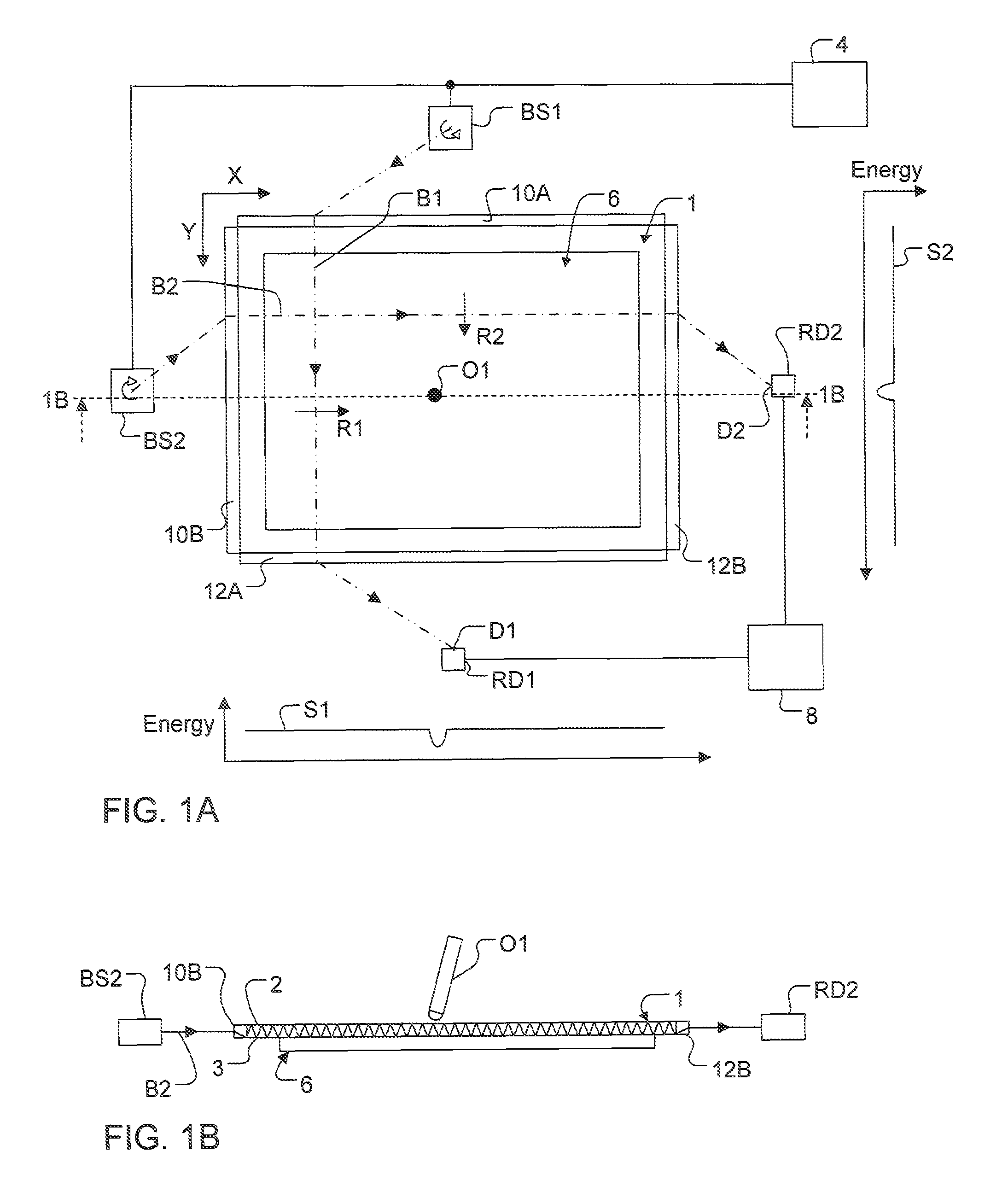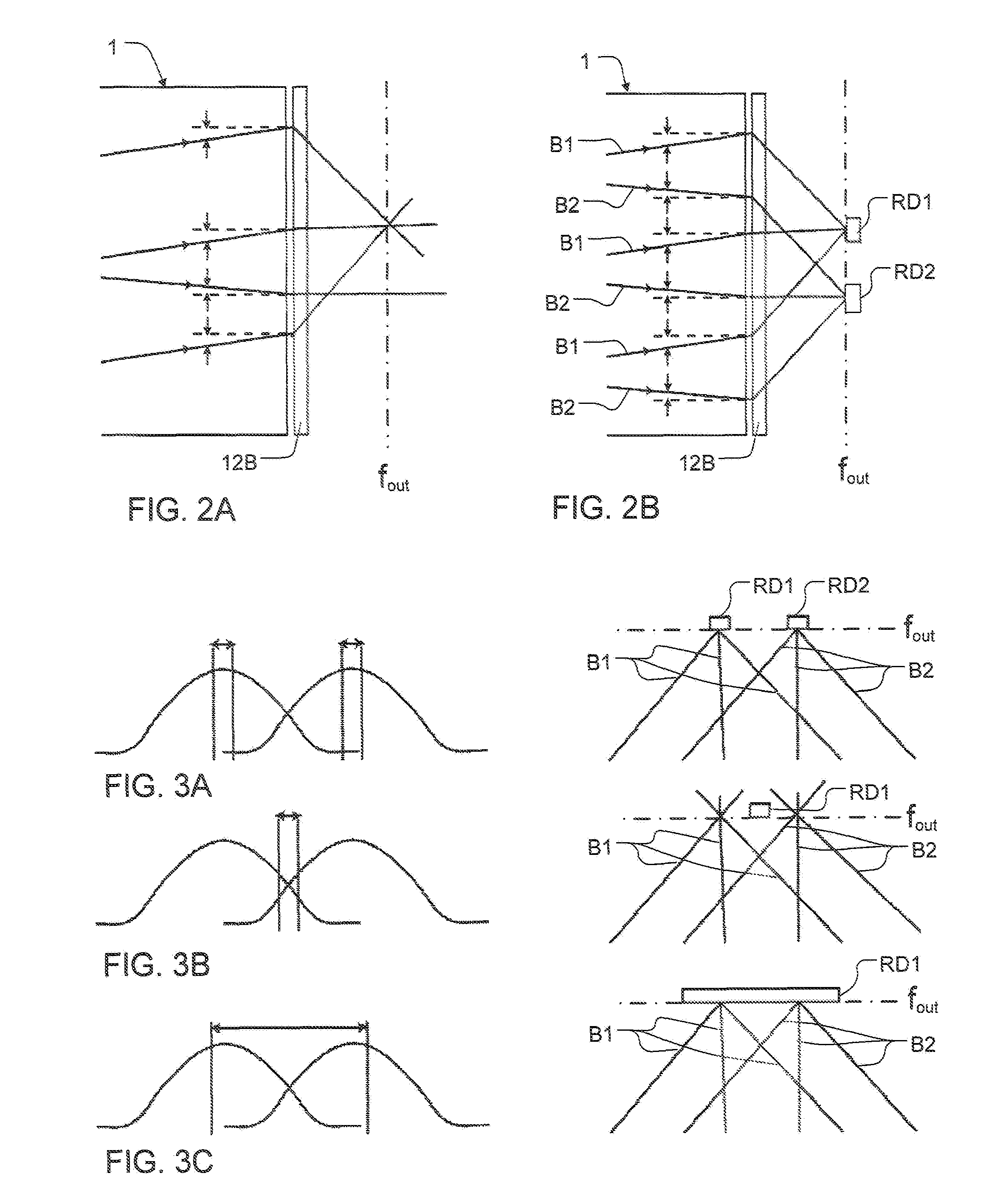Detecting the location of an object on a touch surface
a technology of touch surface and object, which is applied in the direction of instruments, static indicating devices, optical elements, etc., can solve the problems of increasing the energy consumption not readily scalable, and the cost of known ftir techniques, so as to achieve the effect of increasing and reducing the cost of illuminating the panel
- Summary
- Abstract
- Description
- Claims
- Application Information
AI Technical Summary
Benefits of technology
Problems solved by technology
Method used
Image
Examples
Embodiment Construction
[0050]The following description starts by describing an embodiment of an overall touch-sensing system according to the present invention, followed by different embodiments of a detection arrangement for such a system. Thereafter, exemplifying implementation details relevant to the overall system are given, and aspects of multi-touch detection are discussed. Subsequently, different beam sweeps and mutual arrangements of beams during these sweeps are discussed in detail, and a description is given of different embodiments of an illumination arrangement for generating the beam sweeps. Finally, an exemplifying algorithm for determining touch locations in the system is given. Throughout the description, the same reference numerals are used to identify corresponding elements.
[0051]The present invention relates to a technique for determining the location of an object that touches a surface of a radiation transmissive panel. An example of a touch-sensing system including such a panel 1 is s...
PUM
 Login to View More
Login to View More Abstract
Description
Claims
Application Information
 Login to View More
Login to View More - R&D
- Intellectual Property
- Life Sciences
- Materials
- Tech Scout
- Unparalleled Data Quality
- Higher Quality Content
- 60% Fewer Hallucinations
Browse by: Latest US Patents, China's latest patents, Technical Efficacy Thesaurus, Application Domain, Technology Topic, Popular Technical Reports.
© 2025 PatSnap. All rights reserved.Legal|Privacy policy|Modern Slavery Act Transparency Statement|Sitemap|About US| Contact US: help@patsnap.com



